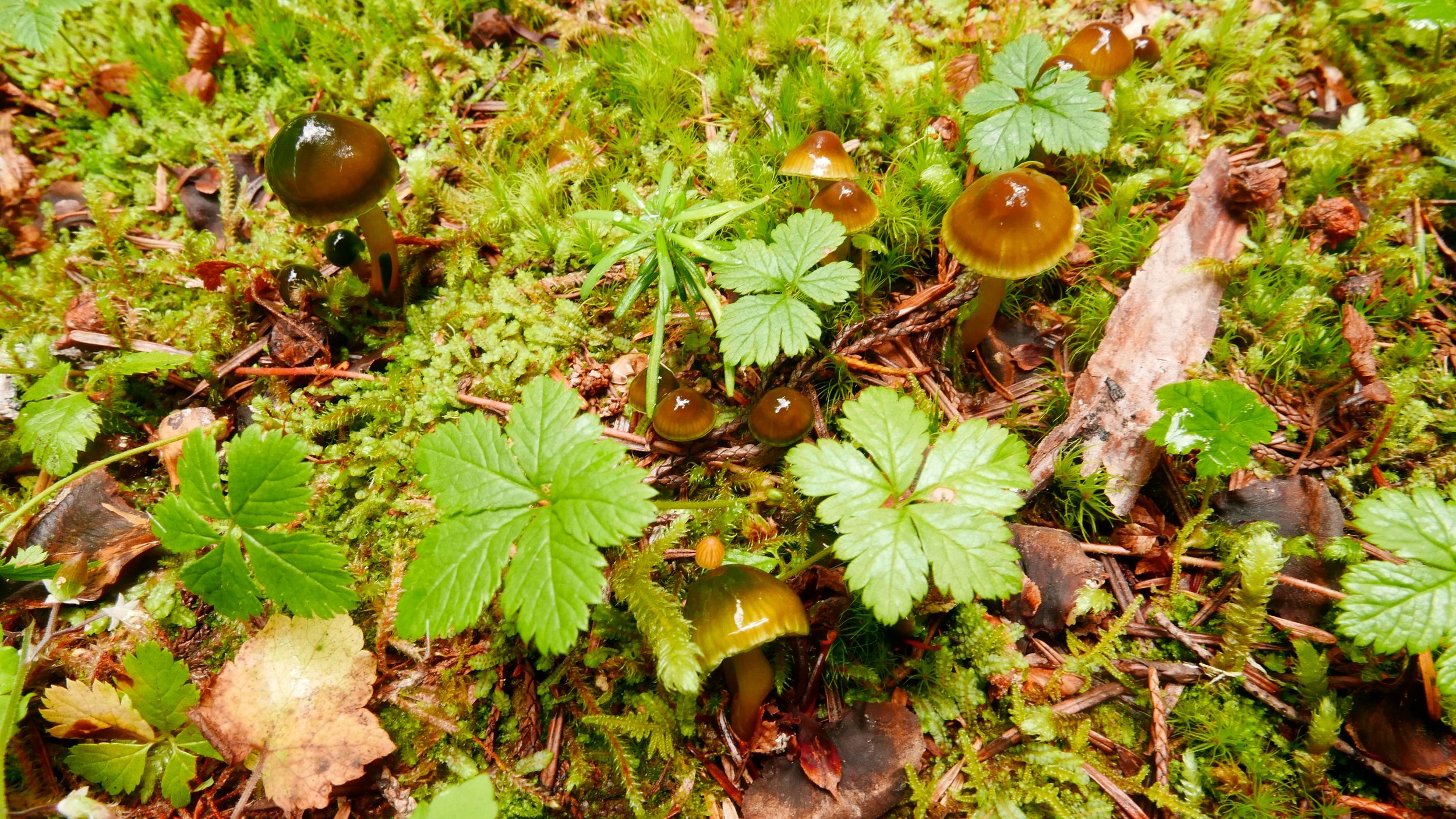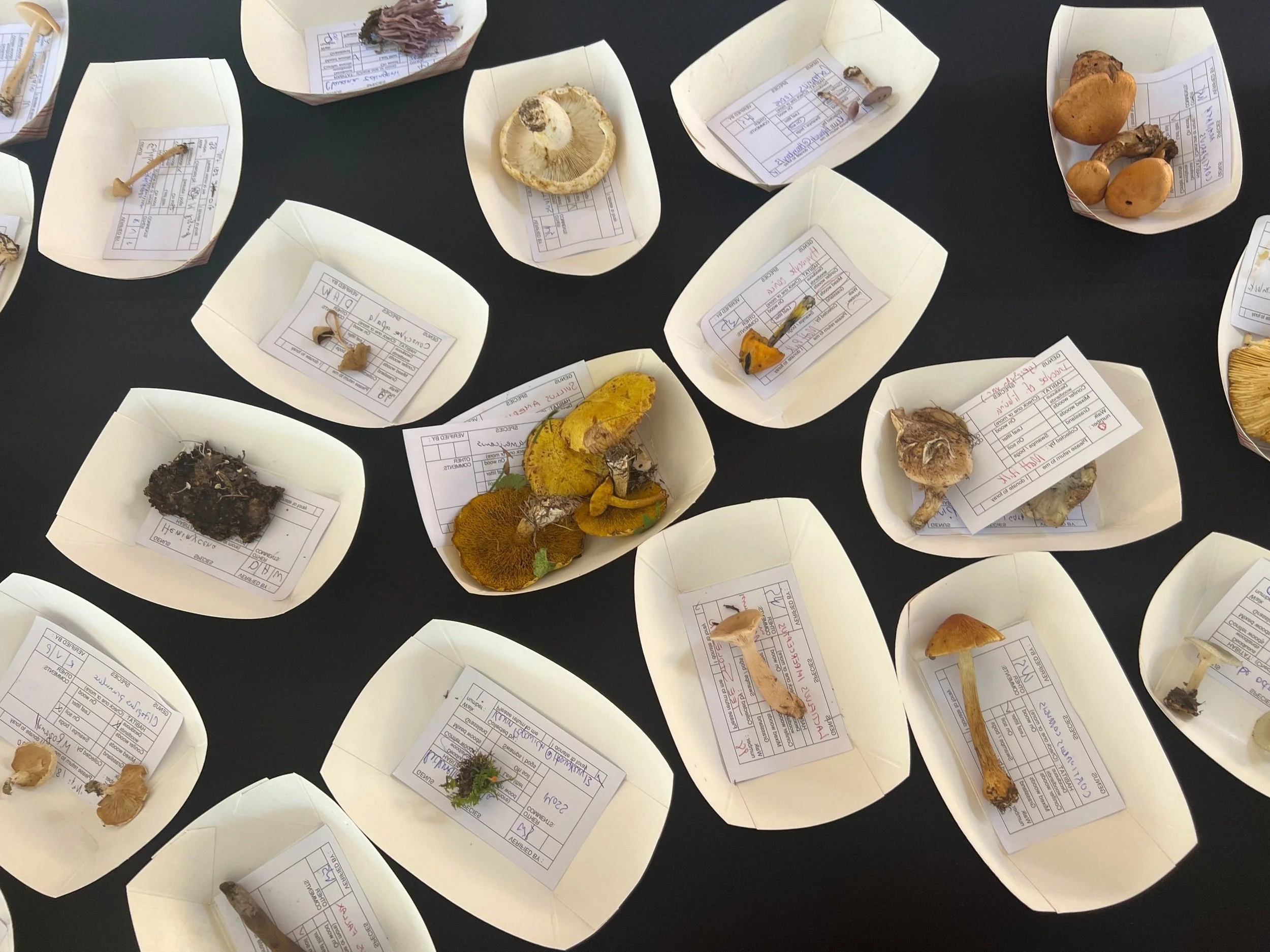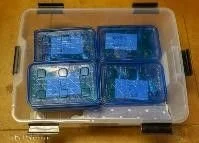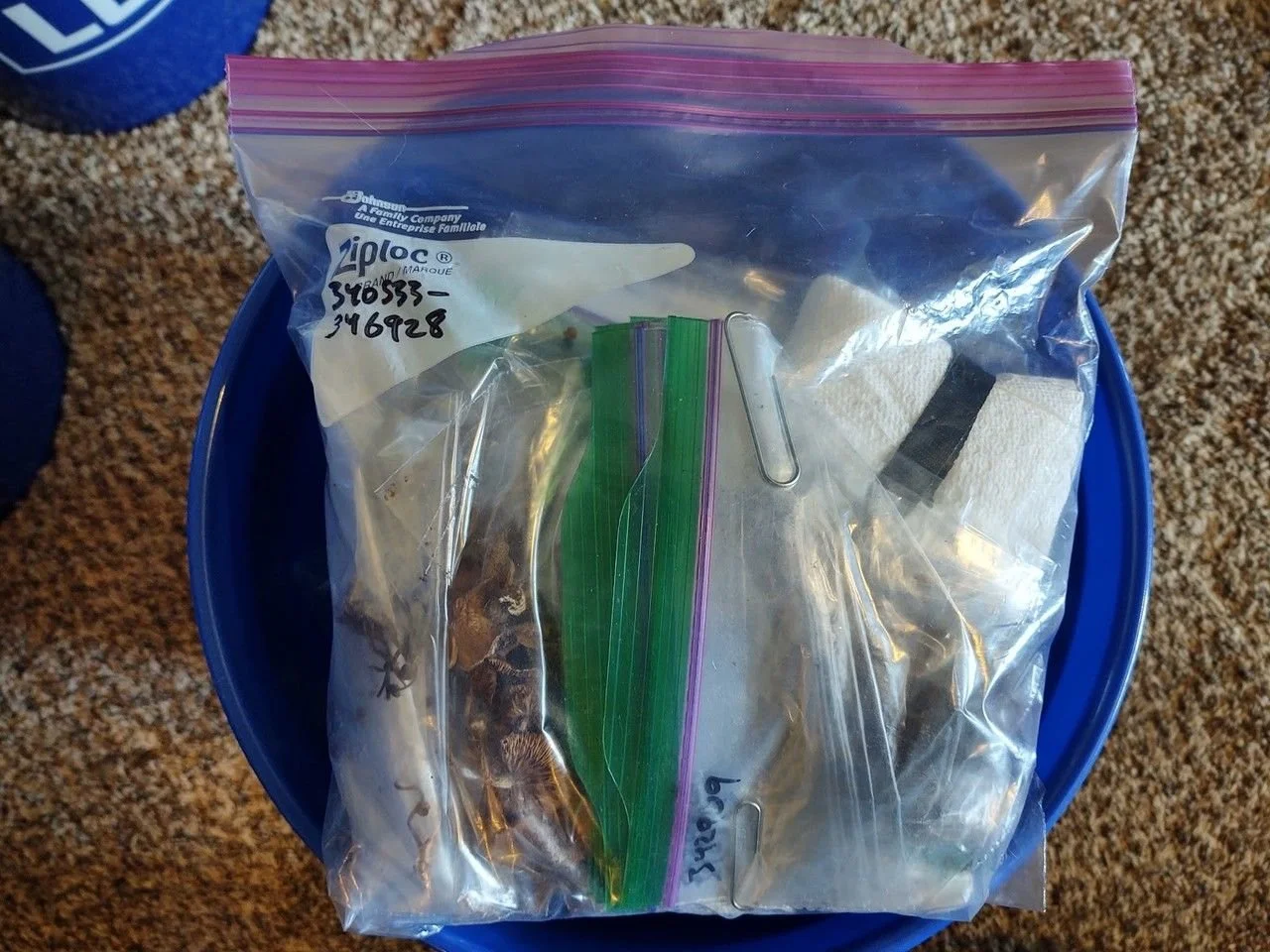Drying & Storing Mushroom Specimens
Photo by Gabriela D’EliaSummary
Use a dryer with temperature control
Dry your fungi at 110-120°F max until they're cracker dry.
Cut up fungi that don't fit into smaller pieces (cutting them in half down the center should do)Keep track by taping the number next to or under the specimen.
Place dried fungi in Ziploc bag with associated field data slip.
Details
Dry your specimens if you will be sending them for DNA sequencing, or if you plan to send them to a fungarium.
Drying Equipment
Although a food dehydrator is your best choice, some tougher specimens can be air dried in dry conditions. A kitchen oven on lowest heat is not recommended as it is too easy to damage the mushroom and its DNA.
Most mycophiles and mycologists use a food dehydrator, commonly used for drying fruit, vegetables and meat jerky.
A good dehydrator will have a heater, fans that allow air to circulate within the unit, a variable temperature control, and removable racks.
Fruit Dryers: Excalibur vs Nesco-American Harvest
This 15 min. video compares the two brands of food dehydrators most commonly used by mushroomers. A small Nesco Gardenmaster with adjustable temperature is a good choice for serious beginners, and can be bought used on eBay.
Start drying as soon as possible
Yeasts, molds, bacteria, and insects will start to degrade the specimen, so if transport will take more than a few hours, consider placing specimens, especially fleshy ones, in an ice chest during transport or in a refrigerator at home.
Prepare specimens for drying
Select the best specimens from each collection and clean them thoroughly. When gathering material for sequencing, ensure that the DNA belongs to the collection being sequenced, not to other specimens in the dehydrator or your basket, and minimize contact between different species during collection and drying.
Special situations:
Large mushrooms should be sliced before drying to prevent rotting; remove the cap from the stem and slice both at least once.
For hard ascomycetes, air-drying is as effective or better than using a dehydrator, and it prevents ascospores from dispersing to other specimens.
Drying in a dehydrator
When drying specimens in a dehydrator, label each specimen on the rack to preserve identifying characteristics, as these may be lost after drying.
Use FUNDIS field data slips by either placing the whole slip with larger specimens or cutting and attaching the bottom drying number to keep your collection organized; position the label on top of or tape it to the rack to prevent it from blowing around.
For small specimens, consider using small cups, petri dishes, wire mesh, or craft holders.
Set the dehydrator temperature to 110–120°F (43–50°C), as temperatures above 155°F (68°C) can damage DNA. Dry the mushrooms until they are as dry as potato chips, which can take 12 to 48 hours depending on ambient humidity, size, density, and water content.
Package your dried specimens
Package your dried specimens for home storage or for sending to a fungarium. Place crispy dry specimens in a resealable plastic bag to keep them dry.
Resealable snack, sandwich and quart bags (like Ziploc) can be bought at grocery stores. Smaller resealable bags can be purchased for tiny specimens in the jewelry section of craft stores.
If you plan to store these at home and your relative humidity is below 50%, see Temporary Storage and Personal Fungaria below.
Labels
IMPORTANT: Write the iNat or MO observation number on the field data slip or a separate piece of paper. This number will track specimens through sequencing or vouchering. Place the field data slip or paper in the bag with the specimen.
Finding Your Permanent Observation Number
On iNaturalist
The observation number is at the end of the URL.
For example, in https://www.inaturalist.org/observations/35843490, the number is 35843490.On Mushroom Observer
The observation number is a six-digit number in bold at the top of each observation and also in the URL, e.g., https://mushroomobserver.org/305208.
Printing Labels
On iNaturalist
iNat lacks a label export feature. You can export a CSV file from your project and manually copy key information into a Word document, then format, print, and cut the labels. Alternatively, use Mail Merge Manager in Word to create labels directly from the CSV file.On Mushroom Observer
Easily print data-rich labels by opening your Species List and using the “Print Labels” link at the top of the list. You can print directly or format the labels in a word processing program before printing. Include these labels in your specimen bag along with the field data slip or other notes.
Temporary Storage & Personal Fungaria
Every attempt should be made to ensure that specimens sequenced by FUNDIS are also sent to a curated fungarium which posts their holdings on the website MycoPortal. Then your specimens will be available to scientists interested in studying them.
But projects may need to store specimens at home for months or longer.
Dried fungi absorb moisture from the air, causing the DNA to degrade.
Most projects must make tough decisions about which specimens will be sequenced and save collections to take sequencing samples when they are ready.
It may be months until the next fungarium shipment.
Projects may choose to collect and store specimens that are not sequenced and not planned as fungarium vouchers, perhaps for later personal study.
The key is to keep specimens organized, protected and dry. Keeping them dry may require a desiccant to absorb moisture if the relative humidity is above 50%. Some dessicants, like Drierite can be reused by heating in an oven, while others, like DampRid need to be replaced. How often you need to reheat or replace your desiccant depends on how airtight your containers are, how often you open them, and local humidity.
Examples of DIY Home Fungaria
Bill Sheehan's fungarium
Large 6-latch “Weatherproof” plastic containers, smaller containers inside for organization, and indicating silica gel beads to absorb moisture. When the beads change color (turn from blue to pink) they need to be dried in an oven or stovetop cast iron skillet. SIlica beads can be contained in loose cotton bags, old socks, mesh jewelry bags, or just added loose on the container floor. A system with four large bins that can store approximately 1,000 specimens costs around $170 in materials.
Jacob Kalichman's fungarium
5-gallon plastic buckets, 1-gallon Ziploc bags inside for organization, and DampRid to absorb moisture. Specimens are still in small Ziploc bags. Don’t let the DampRid touch the mushrooms or bags directly (it’ll get them wet); instead wrap it up in something breathable like paper towels. It can’t be reused, but it should last many months or even years in an effectively airtight container. Lowe’s blue buckets are pretty airtight with the included lids. 1500-1700 specimens can be stored for about $160.
12 lbs DampRid $42
10 bucket lids $20










